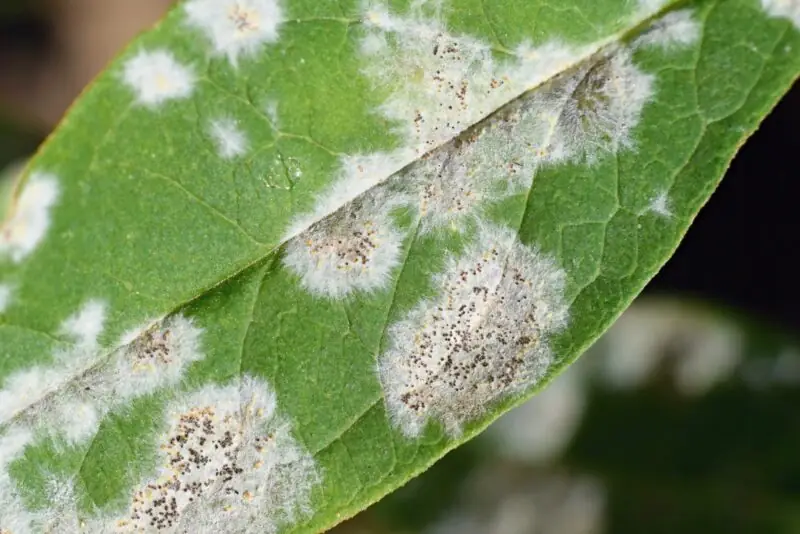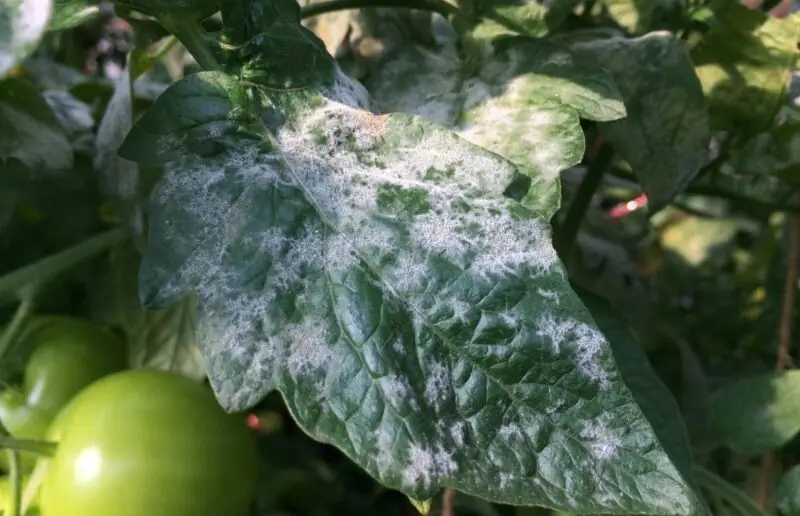What Is Powdery Mildews and How to Prevent Powdery Mildew on Your Plants

Powdery mildew is a common fungal disease, plaguing a wide range of plants. Known for its white to gray powdery growth on plant parts, it can cause significant damage if not checked. This article delves into powdery mildew, how it spreads, and impacts your plants. We’ll also uncover the causes of powdery mildew to help you prevent or control an outbreak. So grab a cup of coffee (or tea), and let’s learn all about powdery mildew!
Symptoms of Powdery Mildew
Powdery mildew is a fungal disease. It’s caused by many different species of powdery mildew fungi from the Erysiphaceae family. These fungi grow on leaf surfaces. They form spores that transfer from one plant part to another via wind currents or human activity.
These fungi thrive under high relative humidity conditions. The conditions are as low as 40-50% and are common in many regions during the growing season.
Visible Signs
The first sign of a powdery mildew infection usually appears as small white powdery spots on the leaves. They appear near the air circulation openings, such as stomata or pores. Over time, these spots become more visible and cover most of the leaves with whitish-gray patches that resemble talcum powder!
How It Spreads
The spread of powdery mildew depends largely on environmental conditions. It can accelerate if infected plant debris isn’t removed promptly after symptoms appear. To prevent further spread:
- Remove any infected leaves and plant debris from your garden.
- Increase air circulation around susceptible plants by pruning or thinning crowded branches.
- Avoid watering late in the day as this encourages further mildew growth.
Impact on Your Plants
Powdery mildew can significantly impact your plants. It affects photosynthesis, essential for healthy growth and development. As the fungus grows, it causes damage leading to deformations like twisted leaves and stunted stems. Ultimately, it reduces the quality and yields of your crops!
Reasons Powdery Mildew Infection Occurs

Let’s look at some reasons why powdery mildew might occur:
Plants Are Too Close Together
This creates an ideal environment for fungal spores. There’s little air movement between crowded foliage, which promotes the spread of the disease. To avoid overcrowding:
- Plant with enough space between each individual.
- Rotate the location every year to prevent infestation build-up.
Lack of Pruning
Failure to prune results in an unmanageable tangle of twigs and shoots. It also impedes airflow, contributing to disease growth. To avoid overgrowth, prune regularly to increase airflow.
Not Enough Direct Sunlight
Powdery mildew thrives in humid, low-light environments. If plants lack sunlight, they may be more susceptible to powdery mildew. To ensure proper light exposure, choose planting locations that receive adequate sunlight.
Poor Watering Habits
Overwatering can lead to standing water on leaves, perfect for powdery mildew spores. Underwatered plants also have weakened immune systems, making them more susceptible to diseases. Ensure you water properly: water deeply but infrequently, and only water in the early morning or late afternoon.
Lack of Mulch
Mulching helps regulate soil temperature and moisture levels. It also protects your crops from airborne spores. To ensure proper mulching, mulch regularly with a wide variety of organic materials.
Composting Diseased Material
If you compost diseased plant material, the spores can survive in your compost pile. This can infect your plants later. To avoid this, only add healthy plant material to your compost pile.
Over Fertilizing
Fertilizing your plants more than required can encourage powdery mildew growth. This happens due to an increase in nutrient availability which the fungi can exploit.
To avoid over-fertilization:
- Stick to the recommended fertilization schedule based on the type of plant;
- Opt for natural or organic fertilizers over synthetic ones as much as possible.
Not only do these have less impact on the environment, but they also promote the overall health of the ecosystem.
How to Treat Powdery Mildew, Prevent and Control
To get rid of existing powdery mildew, various treatments must be applied. A common solution is the use of fungicides. Some fungicides contain sulfur or potassium bicarbonate, which have proven to be effective in controlling the spread of the disease. These fungicides inhibit the growth of the powdery mildew fungi and can be applied to many plants, including those already affected by powdery mildew.
When preparing the solution, typically 1 gallon of water is used with the recommended amount of fungicide. The solution is then sprayed onto the leaves and stems of the plant, especially covering the white, powdery mildew spots. This treatment needs to be applied regularly for powdery mildew control.
Although powdery mildew is a tough disease to combat, plants can also be bred to be resistant to powdery mildew. These powdery mildew-resistant varieties are a good option for gardeners who frequently deal with this disease. Additionally, moisture on leaves while others are favored can cause powdery mildew, so proper watering techniques and good air circulation can also help prevent the spread of this disease. With the right preventative measures and treatments, it is possible to maintain a vibrant, powdery mildew-free garden.
FAQs
Yes, you can! Natural remedies like neem oil or baking soda sprays can be used to manage powdery mildew. These solutions are eco-friendly and have proven to be effective in controlling the spread of this disease. Note, however, that some remedies may need to be applied frequently depending on the severity of the infection. Always read the label instructions carefully before using any product.
Indeed, the best treatment for powdery mildew is prevention. By frequently pruning them, you can keep the airflow surrounding your plants healthy. During the growing season, give them a gentle watering, preferably in the early morning or late afternoon. If at all feasible, avoid using overhead watering systems. Finally, if available, think about using plant kinds that are resistant to powdery mildew.
Powdery mildew is not considered harmful to humans. However, inhaling a large concentration of spores can cause respiratory irritation or skin allergies in some individuals.
Conclusion
In the world of plant diseases, powdery mildew is a common menace that affects a wide range of plants. This fast-spreading fungus can cause significant damage to susceptible plants, including many ornamentals and crops.
Understanding how to prevent and control powdery mildew is key. By following correct gardening practices such as regular pruning, proper watering, and avoiding over-fertilization, you can keep this disease at bay. Should you see the first signs of disease, such as white powdery spots on the leaves, don’t delay in applying natural remedies like neem oil or baking soda sprays.
Just keep in mind that powdery mildew prefers specific environments. You may significantly lower the danger of powdery mildew infection in your garden by making those changes and taking good care of your plants. Keep in mind that healthy plants are less likely to contract diseases. You can ensure that your garden is lively and clear of powdery mildew by making an effort.
Referencies:
- “The Powdery Mildews: A Comprehensive Treatise” by Robert R. Bélanger, William R. Bushnell, Alan J. Dik, and Thomas L. W. Carver. Published by APS Press.
- “Powdery Mildew: The Forgotten Pathogen” by M. L. Powdery. Published by CABI.
- “Plant Pathology” by George N. Agrios. This is a comprehensive book on plant diseases, including powdery mildew. Published by Academic Press.
- “Powdery Mildews: A Guide to Identification of the Common Casual Agents in the United States and Canada” by Paul D. Peterson, Richard C. Heimsch, and Charles E. Main. Published by APS Press.